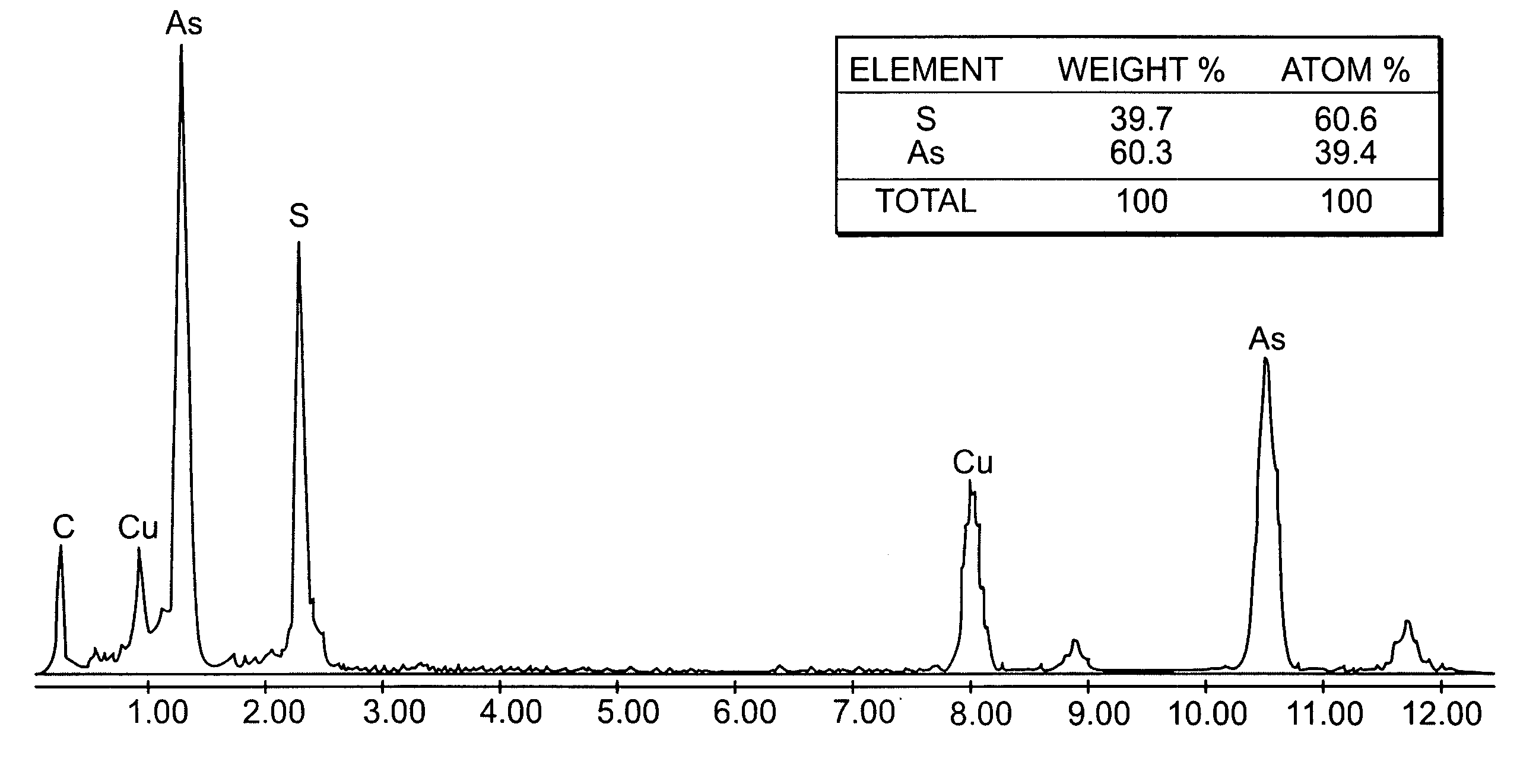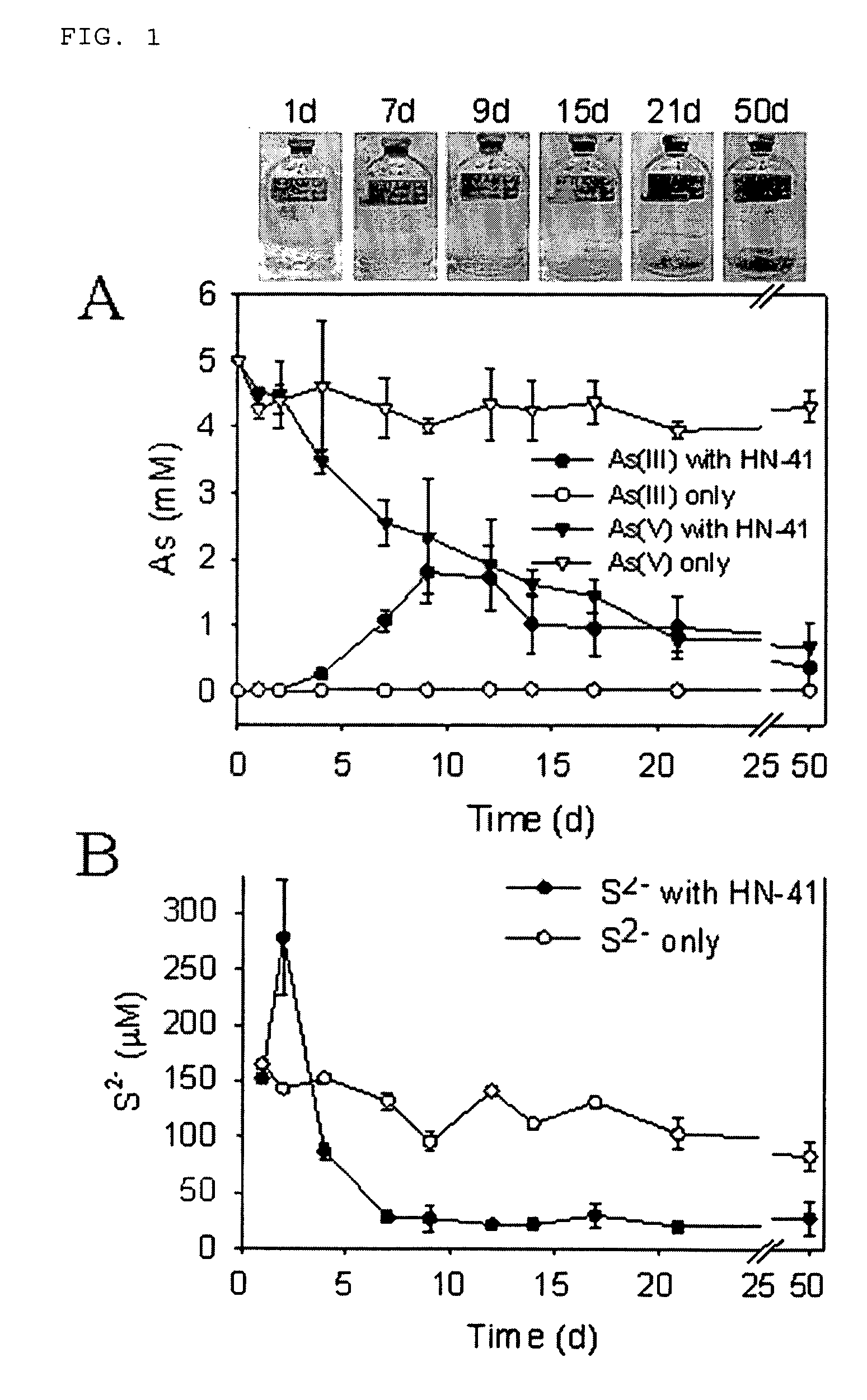Biological production method of photoconductive arsenic-sulfide (As-S) nanotube and strain used for the same
a technology of photoconductive arsenic sulfide and nanotubes, which is applied in the field of biological production of arsenic sulfide (as — s) compound based nanotubes and strains used for the same, can solve the problems of high production cost and complicated production processes, and the requirement for further effort in the purification step, so as to improve the convenience of production and achieve high potential utility
- Summary
- Abstract
- Description
- Claims
- Application Information
AI Technical Summary
Benefits of technology
Problems solved by technology
Method used
Image
Examples
example 1
Culture of Inoculation Strain
[0045]After culturing Shewanella sp. strain HN-41 in a solid LB (Luria-Bertani) medium at 30° C. under aerobic conditions for 24 hours, bacteria were collected using a loop, centrifuged and washed well using an incubating solution separately prepared, for example, a HEPES-buffered defined medium. The washed strain was again suspended in the incubating solution to prepare a strain containing solution with optical density OD of about 2.0 at 600 nm.
example 2
Culture of Strain for Production of As2S3
[0046]Anaerobic HEPES-Buffered Defined Medium
[0047]The following compounds were dissolved in 1 L of the medium.
NaHCO32.5gCaCl20.06gβ-glycerophosphoric acid disodium salt0.06gNH4Cl1gMgCl2•6H2O0.2gKCl0.1gNaCl10.0gHEPES (N-2-hydroxyethylpiperazine-N′-2-ethane sulfonic7.2gacid)Yeast extract0.1gResazurin (0.05%)0.1mLTrace element containing solution1)10mLVitamin containing solution2)1mL1)Trace elements containing solution (1 liter of final volume)2)Vitamin containing solution (1 liter of final volume)
[0048]The above ingredients were dissolved in 1 L of distilled water to prepare an incubating solution, and nitrogen gas (100%) was injected into the solution and boiled during agitation. After boiling the incubating solution till blue color of resazurin completely disappeared, nitrogen gas was injected into the treated solution while cooling the solution. pH value of the cooled solution was adjusted to pH 7.5 using 10N NaOH. The resultant incubating...
example 3
Production of As—S Based Nanotubes and Characterization Thereof
[0052]As shown in FIG. 1, As5+ was reduced into As3+ to result in decrease of As5+ concentration during progress of the culture. On the contrary, As3+ concentration was apt to be initially increased, then, decreased again and this indirectly demonstrated that As3+ was precipitated in the form of As—S compound to cause reduce concentration of As3+ in a water-soluble solution phase of the incubating solution. Similarly, thiosulfate (S2O32−) was reduced into sulfide ions (S2−) to cause initial increase and following decrease of S2− concentration in the water-soluble solution phase of the incubating solution. This means that S2− was evaporated into an upper space in the bottle to be cultured or was precipitated in the form of As—S compound, thereby reducing the concentration of S2− in the water-soluble solution phase. From photographs of the bottles to be cultured depending on time as shown in FIG. 1, yellow As—S compound pr...
PUM
 Login to View More
Login to View More Abstract
Description
Claims
Application Information
 Login to View More
Login to View More - R&D
- Intellectual Property
- Life Sciences
- Materials
- Tech Scout
- Unparalleled Data Quality
- Higher Quality Content
- 60% Fewer Hallucinations
Browse by: Latest US Patents, China's latest patents, Technical Efficacy Thesaurus, Application Domain, Technology Topic, Popular Technical Reports.
© 2025 PatSnap. All rights reserved.Legal|Privacy policy|Modern Slavery Act Transparency Statement|Sitemap|About US| Contact US: help@patsnap.com



